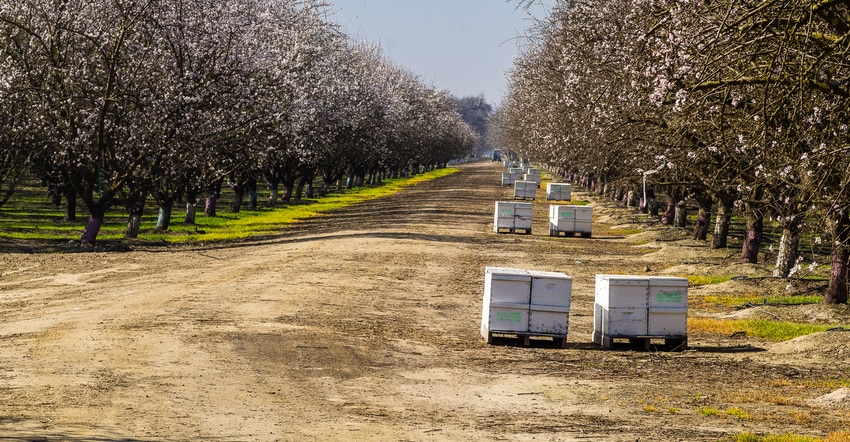October 26, 2018

California agricultural commissioners will soon have the regulatory “teeth” they sought to enforce bee registration each year – something they long complained was needed to protect pollinators.
Pest control advisors at the recent annual meeting of the California Association of Pest Control Advisors (CAPCA) were the first to publicly hear about the 18-month effort to create an updated system to foster compliance of a law long-ignored and better communication between stakeholders, according to Ruthann Anderson, CAPCA chief executive officer.
Dubbed “Bee Where,” the new program gives agricultural commissioners, starting in 2020, the authority to seek administrative civil penalties when a beekeeper does not register or does not provide notification of movement of bees. Agricultural commissioners and the bee industry will continue to meet over the next year on appropriate fines that could range from $50 to $1,000.
While previous law required beekeepers to register their bees with county agricultural departments, it was effectively unenforceable, said Riverside County Agricultural Commissioner Ruben Arroyo. The new law that goes into effect Jan. 1, 2019 makes it unlawful to maintain an unregistered apiary. Annual bee registration fees will remain at $10 per beekeeper.
Funding for the new sensitive site layer in Cal Ag Permits came from the California Department of Food and Agriculture and California Department of Pesticide Regulation. The California Agricultural Commissioners and Sealers Association (CACASA) promoted the program in collaboration with CAPCA. Arroyo is the current CACASA president. Additional funding to support a free online beekeeper registration portal came from the California State Beekeepers Association and the California Almond Board.
The website http://beewherecalifornia.com was set up to help growers, PCAs and beekeepers understand all the pieces that come together at the Bee Where program.
While California law requires beekeeper contact information be kept confidential, limited information is made available to an applicator with a scheduled application within a mile of the hives to provide beekeepers notification prior to a spray application.
Assembly Bill 2468 by Dr. Joaquin Arambula, D-Fresno, passed the legislative process with no industry opposition, Anderson said.
Arroyo and Anderson promoted the program to over 1,000 PCAs at the association’s recent annual meeting in Anaheim, Calif. Part of the effort there was to highlight ongoing efforts to protect pollinators, which has gained steam in recent years as beekeepers continue to seek answers into higher rates of winter mortality and bee deaths.
While certain classes of pesticides and chemical tank mixes have been blamed for bee deaths, Anderson sees the program as a good first-step to begin collecting data that might help close in on the true cause of bee mortalities.
How it works
The legislation requires anyone who moves bees into the state or otherwise comes in to possession of an apiary to register the name of the owner, the number of hives and the location those colonies will be moved to within 30 days of arrival.
Bee owners must also be on record, either directly or through their designated representatives. This includes name and address of the appropriate party. Hives must also be marked with identifying information. This is unchanged from previous law.
Beekeepers are being encouraged to utilize the online system for registration and movement notification. Those registrations can take place through Field Watch or the Bee Where website.
“We’re just trying to help the beekeepers become accustomed to registering their bees online,” he said.
The program will use the latest computer technology to map bee colony locations. The intent is to have locations linked through Crop Management software like Agrian and CDMS, so when a PCA writes a recommendation through the program, an instant flag will go up if bees are registered within a mile of the planned application site.
“It will come up with a list of suggested softer chemicals to use, but we’re still working on this,” Arroyo said.
The program is also hoped to have a smart phone app available, so growers, beekeepers and regulatory agencies can search for and tag bee hive locations. County inspectors can then verify these locations to determine if hives are registered and act on those that are not registered.
Anderson says pilot launch of the program will begin with the 2019 almond bloom. A second phase starts a year later with feedback from various stakeholders and expansion of the technology to eventually include reporting of unmarked and unregistered bee hives and information to aid investigations into bee kills.
You May Also Like




